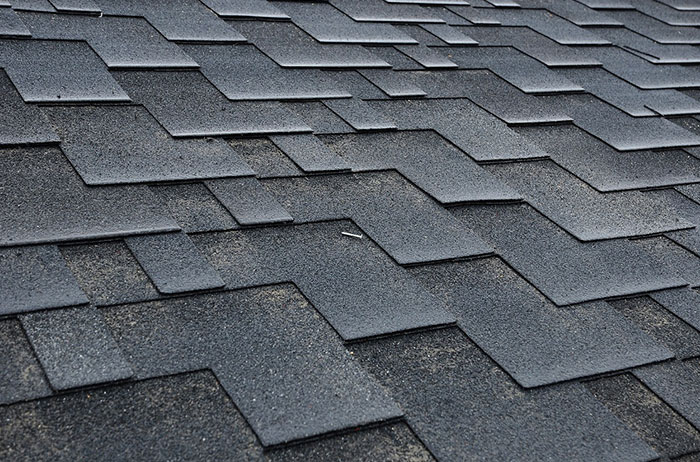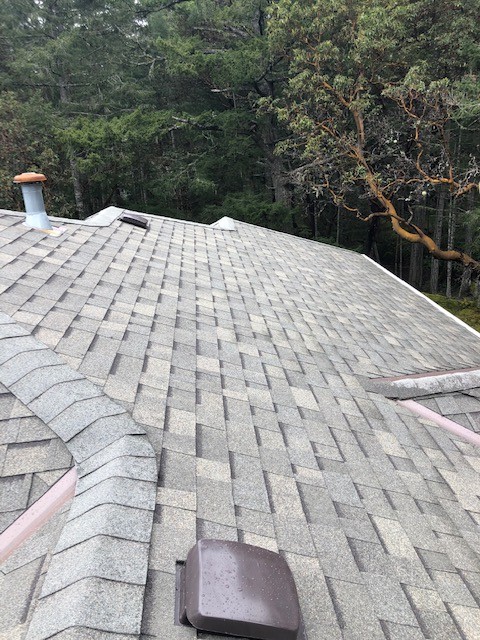When the wind howls and nature unleashes its powerful forces, it can leave behind a trail of unexpected damage. One such challenge homeowners often face is the unfortunate event of wind-blowing shingles off their roofs.
In situations like this, what immediate steps should you take? Is professional assistance necessary? How can you prevent further damage? We understand the concerns swirling in your mind, and we’re here to provide you with the knowledge and guidance you need to address this common issue effectively.
In this article, we will delve into the essential steps you should take if wind-blown shingles leave your roof vulnerable.
Things To Do If Wind Blows Shingles Off Your Roof
-
Assessing the damage
The first thing you need to do when you suspect that shingles have been blown off your roof is to assess how much damage your roof has sustained. Ensure to inspect the interior and exterior of your home.
Just remember to take safety precautions before climbing onto your roof. You can also get professionals to inspect the roof for you.
Below are some tips for assessing damages on your roof:
- Wear proper safety gear.
- Do not attempt to inspect your roof during adverse weather conditions.
- Be cautious of overhead power lines if there are any above your roof.
- If you are tall enough to inspect from the ground, don’t bother climbing the roof.
- If necessary, you can use binoculars to get a closer view. Look for signs of curling or cracking.
- Walk around the perimeter of your house and inspect for blown-off shingles.
- Examine your attics and inspect for water stains or moisture buildup on the insulation or rafters. These are signs of water leaks.
- Inspect your ceilings for water stains, discoloration, peeling paint, or bulging patches.
-
Review your Insurance policy.
After you’ve done the necessary inspections and you can confirm some damage on your roof, the next thing is to review and assess your insurance policy. You need to do this to understand your coverage.
When you understand your coverage, it will be easier to determine the compensations and repair assistance you are eligible for. Below are some important things you must consider to understand your insurance policy and coverage.
- Once you’ve fully ascertained the extent of the damage on your roof, contact your insurance provider. Provide them with the details of the damage and ask that they guide you through the claims process and the necessary information and documentation requirements.
- Review your insurance policy document and study specific clauses that address shingle loss and wind-related damages.
- Document the extent of the damage by taking photographs or videos of the affected areas. This visual evidence will serve as crucial documentation for your insurance claim.
- Follow your insurance provider’s guidelines to file a claim. Ensure to provide all the necessary documentation, including your policy information, photographs/videos of the damage, and any relevant invoices or estimates from roofing professionals.
- You can consider consulting a public adjuster if you are unsure about the insurance claim process. These professionals can help you navigate the complexities of the insurance claim.
-
Hiring a professional or DIY repair
You can address the aftermath of the wind-blown shingles in two ways. You can either hire a professional to help you fix the damages or undertake the repairs yourself.
Each approach has advantages and considerations, depending on the extent of the damage and how comfortable you are with doing it yourself.
When to Call a Professional
- If you notice that the damage on your roof is a very significant one, the best thing to do is to hire a professional to fix it. Don’t attempt to take on big damages like many missing or damaged shingles, widespread leaks, or structural issues.
A professional will have the expertise, tools, and experience to handle complex repairs. Hiring one will ensure you get the appropriate fix for your roof needs.
- If you are uncomfortable working at heights or around steep slopes, don’t consider fixing your roof yourself. In general, it’s safer to leave the job to professionals if you have safety concerns.
- Don’t fix your roof yourself if it is still covered by warranty. Fixing it yourself can void your warranty coverage, so the best thing to do is to call a professional.
DIY Repair Options
- If the damage to your roof is very minor, you can consider fixing it yourself. Some minor tasks you can handle include replacing missing shingles, securing loose shingles, or applying sealants to prevent water intrusion temporarily.
- You need a certain level of experience and confidence to address roof issues yourself. If you have previously completed roofing projects or you are simply comfortable with handling tools and materials, then fixing the roof yourself may be an option.
- Check if you have the necessary tools and materials to complete the repair. You will need specific equipment like a ladder, roofing nails, shingles, adhesives, and sealants. Ensure you have everything you need before starting the project.
If you hire a professional, research and choose a reputable roofing contractor with a proven track record. You can get recommendations from people who have used their service before. You can also read reviews to know the quality of service you will be getting.
On the other hand, if you opt for a DIY approach, research the proper techniques and materials for the specific repairs you need. Consult reputable sources such as manufacturer guidelines, instructional videos, or DIY roofing manuals.
Conclusion
In conclusion, wind damage to your roof can be a significant concern, but taking the right steps can help minimize its impact on your home. If you notice missing shingles or other signs of wind damage, acting promptly to prevent further issues is essential.
For professional assistance in addressing wind-damaged roofs, contact us at Shoreline Roofing. Our expert team is well-equipped to assess the situation, repair any damage, and provide advice on better protecting your roof from future incidents. Don’t let wind damage compromise the integrity of your home – contact us at (250) 413-7967 today for reliable roofing services.



